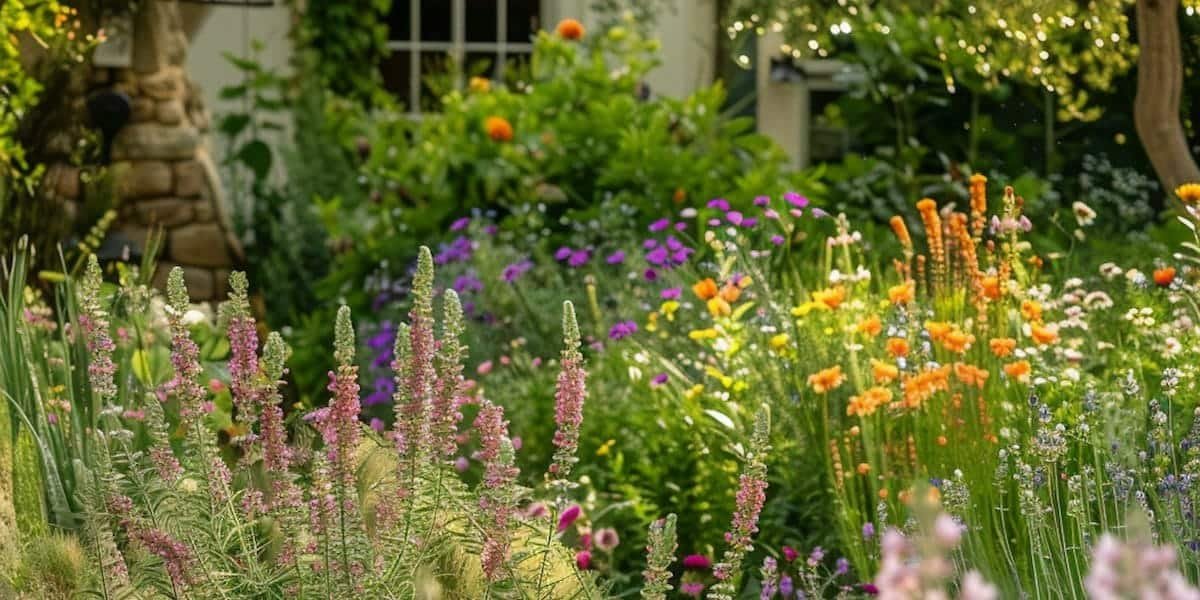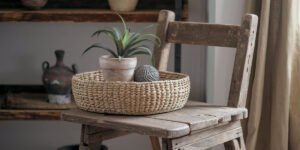Imagine stepping into a garden filled with the soft rustling of leaves, the hum of bees, and the rich fragrance of blooming flowers. Cottagecore with its blend of romanticized rural life and unrefined natural beauty, brings this peaceful vision to life. A cottagecore garden aesthetic combines lush greenery, vibrant colours, and whimsical decor elements to create a magical, nature-infused retreat. Whether you have a sprawling backyard or a small patio, you can cultivate a haven that celebrates nature, simplicity, and the beauty of imperfection.
What is Cottagecore?
At its heart, cottagecore is a lifestyle that embraces a simpler, more mindful existence of times gone by. Rooted in the imagery of the English countryside, it evokes a nostalgic longing for a slower pace, where homegrown food, and a connection to nature are prioritized. In the garde, cottagecore is about creating a space that is as practical as it is beautiful. It’s about celebrating nature’s bounty through a mix of edible plants and flowers, arranged in an informal way.
Characteristics of a Cottagecore Garden Design
Unlike more manicured garden designs, cottagecore gardens revel in their wildness. The aesthetic leans into organic growth patterns and encourages plants to spill over their boundaries, creating a lush, abundant atmosphere that feels both curated and carefree. While the beauty of this aesthetic is its looseness and freedom, there are certain elements that give it its distinct charm.
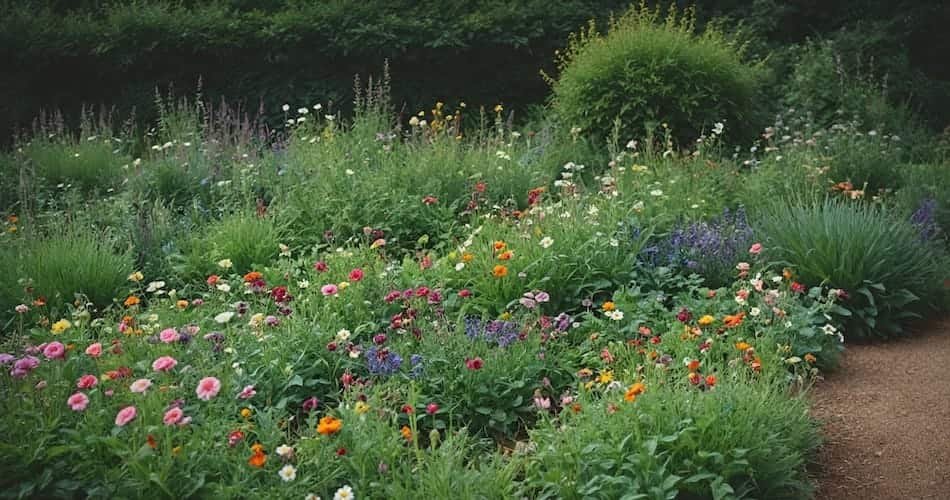
Color
A cottagecore garden abounds in colors. From soft pastels to burst of brighter colours – whites, pinks, purples, blues, and yellows dominate the landscape, creating a dreamy, magical feel. Cottagecore gardens often take cues from nature, letting flowers bloom freely without strict color schemes. The key is in embracing a palette that feels soothing and whimsical to you.
Texture
The interplay between velvety foliage, small feathery leaves, and large architectual shows, adds contrast, depth and richness to the garden. Plants like lamb’s-ear, with its fuzzy silver leaves, contrast beautifully with the feathery fronds of ferns or the delicate petals of wildflowers.
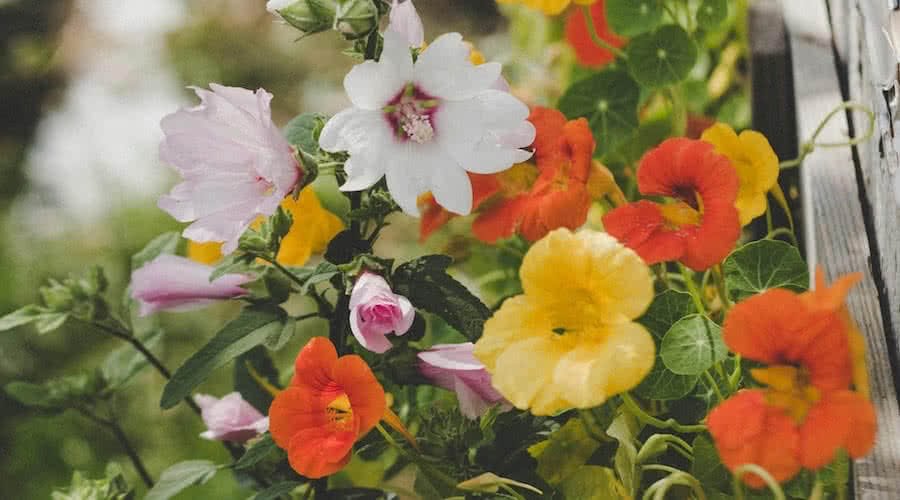
Fragrance
A cottagecore garden should be a feast for all senses, and fragrance plays a huge role too. The sweet aroma of roses, the calming scent of lavender, and the fresh, herbaceous notes of rosemary and thyme fill the air, making every moment spent in the garden an immersive experience in a cottagecore dream.
Curved Lines
In contrast to the rigid lines of modern landscaping, curved pathways and irregular garden beds enhance the natural flow of a cottagecore garden. Winding walkways invite exploration, creating a sense of mystery and wonder. They soften the space, making it feel more organic and natural.
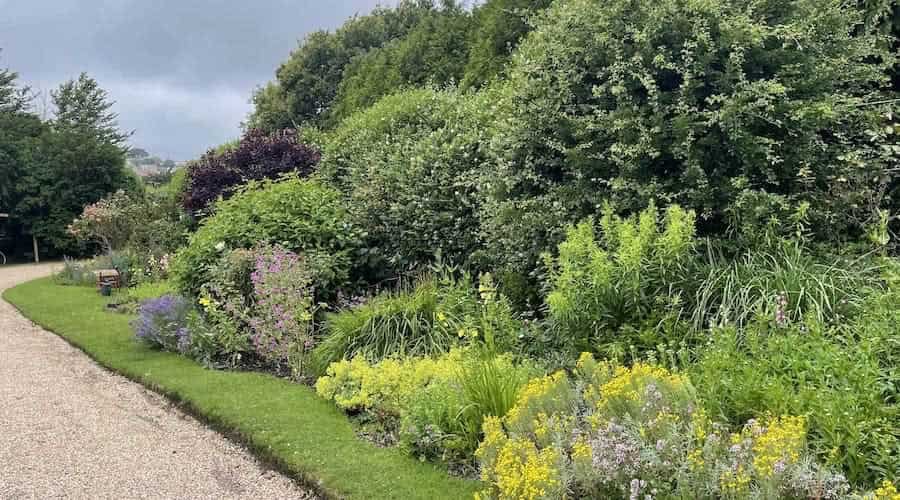
Enclosures
Creating small areas of enclosure within the garden helps foster a sense of intimacy. Think lawned areas hidden between borders, hedges and trellises draped with climbing flowers. These secret spaces make the garden feel like a private haven, a retreat from the outside world.
Wildness
One of the most delightful aspects of the cottagecore garden is its wildness. Unlike formal gardens, the plants are allowed to grow freely, falling out of their beds and over pathways, creating a sense of natural abundance, an untamed, living tapestry.
Wildlife
A thriving cottagecore garden should be a welcoming environment for wildlife. Flowers that attract bees, butterflies, and birds, along with small water features or bird feeders, enhance the natural harmony. Pollinator-friendly plants can serve the dual purpose of adding beauty and supporting essential wildlife.
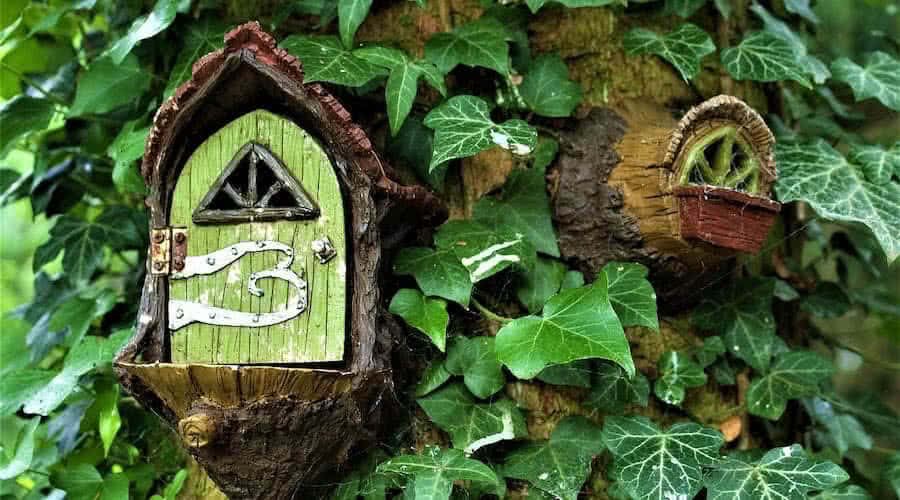
Cottagecore Garden Ideas for Plant Diversity
A cottagecore garden is defined by its variety and abundance, so embracing a wide range of plants is key to creating that aesthetic.
Year-Round Diversity
To maintain a lush garden throughout the year, focus on plants that provide interest across the seasons. Evergreens like holly ensure that the garden remains vibrant even in the colder months, while perennials such as foxgloves and delphiniums return year after year, offering bursts of color and texture. Self-seeding annuals like lobelia and nasturtiums add spontaneity, popping up unexpectedly to surprise and delight throughout the garden.
Pollinator-Friendly Plants
To make your garden a true haven for wildlife, include plenty of pollinator-friendly plants. Lavender and borage not only add beauty and fragrance but also attract bees and butterflies, making your garden a buzzing, lively space.

Climbing Vines
No cottagecore garden is complete without a few whimsical vines. They create vertical interest, and allow you to maximize space in smaller areas. Vines can be draped over trellises, fences, or walls, adding both height and an enchanting, romantic quality to the garden.
Edible Plants
Blending edibles into your cottagecore garden adds both beauty and function. Interspersing herbs like rosemary, thyme, and sage with your flowers creates an aromatic, multi-functional space. Fruits and vegetables can be nestled among your blooms, reflecting the practical yet aesthetic essence of the cottagecore garden.
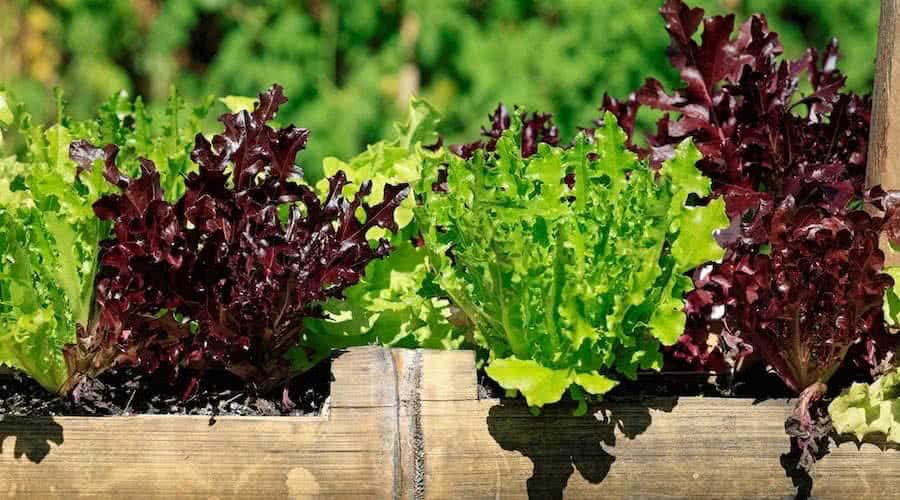
Essential Cottagecore Plants
Now, let’s talk about the stars of the show—the plants that bring a cottagecore garden to life. Of course you’ll need to consider your soil type and aspect of your garden, and choose the appropriate plants for your space.
Flowers
- Roses: Nothing says cottagecore like a blooming rose. Choose garden roses and climbing roses for their delicate beauty and heady scent.
- Lavender: Famed for its calming fragrance, lavender not only attracts pollinators but is a long flowering plant for color throughout the summer.
- Hollyhocks & Foxgloves: These tall, majestic flowers add height and whimsy, especially when planted at the back of your borders.
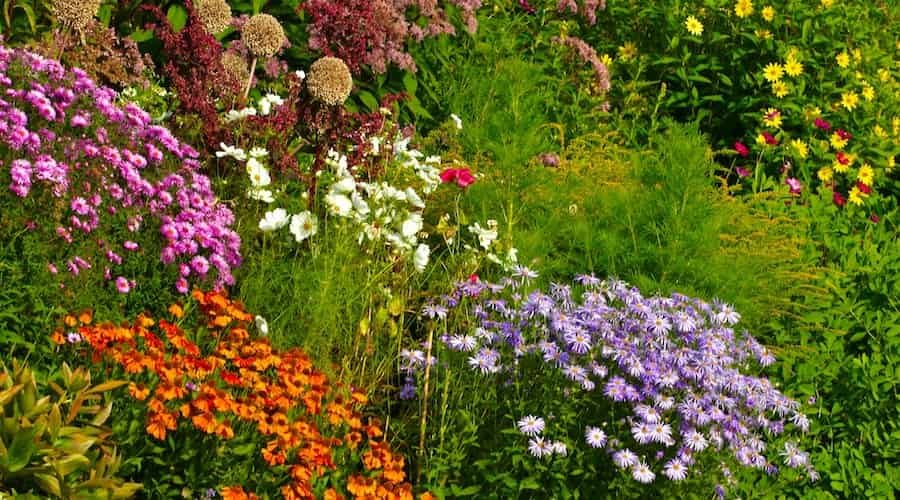
- Marshmallow and Sweet Pea: These soft, cottagecore staples bring a romantic touch, with their delicate blooms and ethereal forms.
- Wallflower & Marigold: Bright and bold, these add a splash of vibrant color that last and last.
- Wildflowers: Scatter native wildflower seeds to evoke the feeling of an untamed countryside. Cornflowers, poppies and yarrow are great examples that create a relaxed, meadow-like charm.
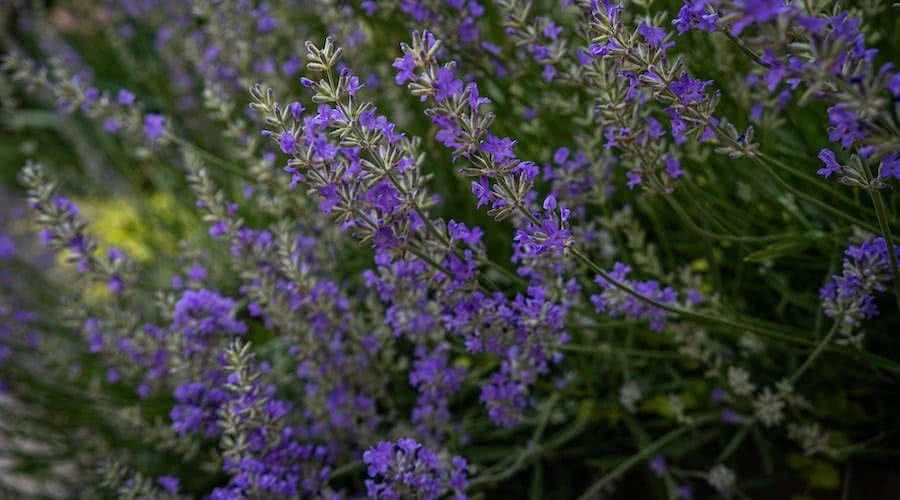
Annuals and Bulbs
- Annuals: Fill gaps with hardy, self-seeding annuals like zinnias and cosmos. Their blooms add seasonal interest and texture to beds.
- Bulbs: Tulips, daffodils, bluebells, and crocuses are springtime favorites that can be planted alongside perennials for bursts of early-season color.
Edible Flowers & Herbs
- Thyme, Rosemary, Sage: These herb staples are easy to grow and bring fragrance and flavor to the garden as well as the kitchen.
- Oregano, Calendula, Lemon Balm: These dual-purpose herbs add pops of color while also being useful in cooking or teas.
- Nasturtiums and Rocket: With edible flowers and leaves, these add a spicy touch to salads and an aesthetic burst of interest.
- Mint, Fennel, Chives: These perennial herbs create a tapestry of colors and textures, and their aroma enhances the sensory experience of your garden and dishes.
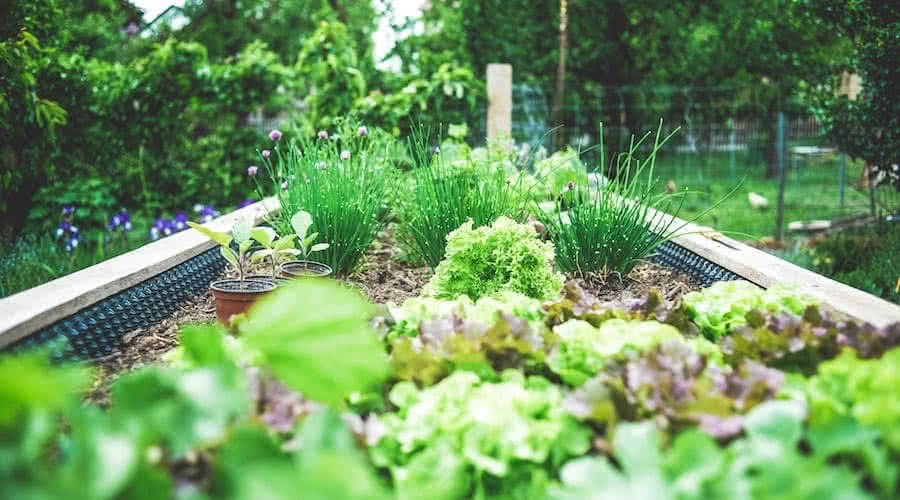
Fruit and Vegetables
Cottagecore embraces self-sufficiency, making homegrown food plants a perfect addition to your garden. Here are a few options that not only provide a bounty but also beauty and interest in the garden.
- Strawberries: Perfect for filling in borders or trailing over containers, strawberries offer bright berries and lush greenery.
- Peas & Beans: These vining vegetables add vertical interest while providing delicious fresh produce. Let them climb over a trellis or wall for a classic cottagecore look.
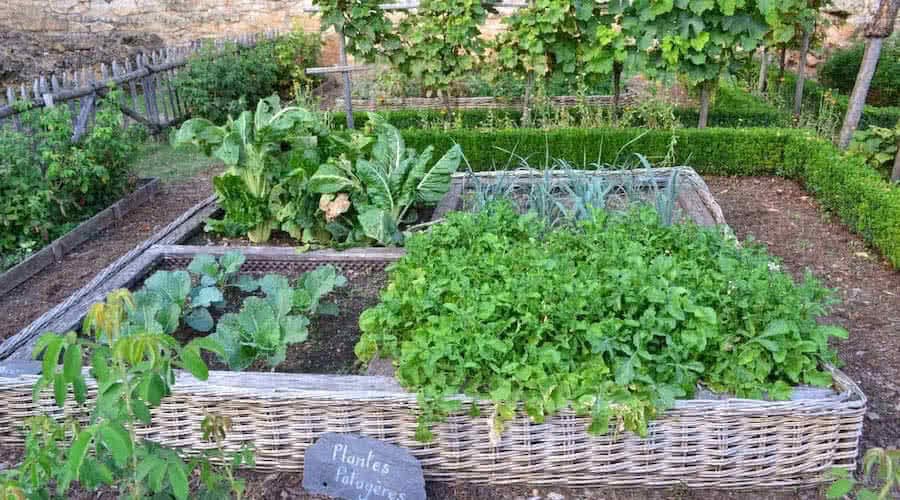
- Tomatoes: Easy to grow and ideal for small spaces, tomatoes add both color and flavor to your garden.
- Pumpkins or Squash: Their large leaves and sprawling habit fit beautifully in a cottage garden, and their fruits add both decorative and edible value in the fall.
- Rhubarb: This hardy perennial adds striking foliage and edible stalks, perfect for pies and jams.

Climbing Plants
- Clematis: Ideal for climbing over trellises or garden walls, clematis provides an abundance of colorful blooms.
- Wisteria: These add a touch of drama, with their cascading flowers creating an enchanting feel.
- Honeysuckle: The sweet fragrance and ability to attract bees, it brings both scent and natural beauty to the garden.
- Passion Flower: With intricate, exotic blooms it adds an extra touch of interest, while attracting pollinators like bees and butterflies to the garden.
- Climbing Roses: A cottagecore garden isn’t complete without these beauties. Their soft, fragrant blooms add vertical interest and romantic whimsy.
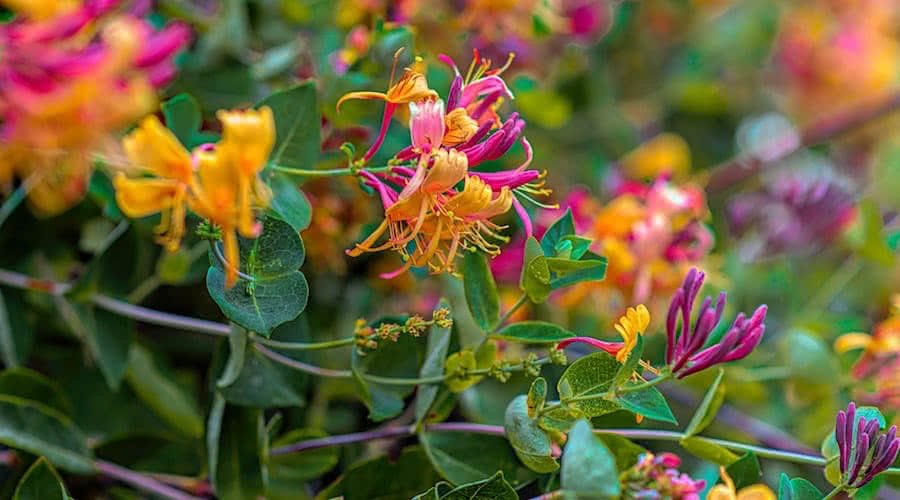
Trees
- Bay Tree: Provide edible leaves for cooking as well as an evergreen structure for the garden and protection for wildlife in the winter.
- Fig Tree: A classic choice for cottagecore gardens, fig trees offer delicious fruit and the broad, lobed leaves add interesting texture.
- Apple Tree: For both beauty and bounty, an apple tree is perfect. Blossoms in the spring and fruit in the fall bring year-round interest.
- Cherry Tree: A cherry tree provides stunning spring blossoms and fruit in the summer, making it a lovely addition to any garden space.
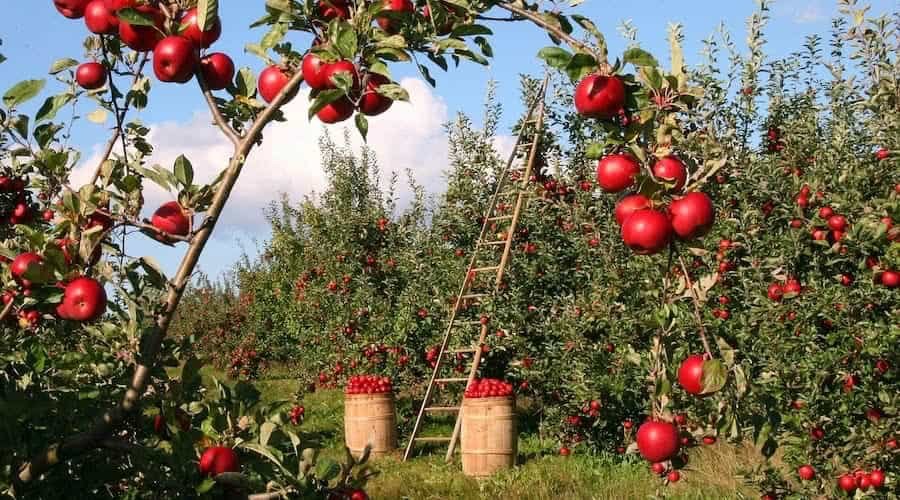
For Wildlife
- Borage: An edible, bee-friendly plant that adds beautiful purple star-shaped flowers to the garden.
- Sunflowers: Their tall, bold flowers attract birds and pollinators, and provide a focal point in your cottagecore space.
- Soapwort, Red Valerian, Hydrangeas: These plants bring not only beautify but also offer nectar to bees and butterflies.
- Golden Rod, Hyssop: Attracting pollinators, these perennials are valuable for biodiversity and visual interest.
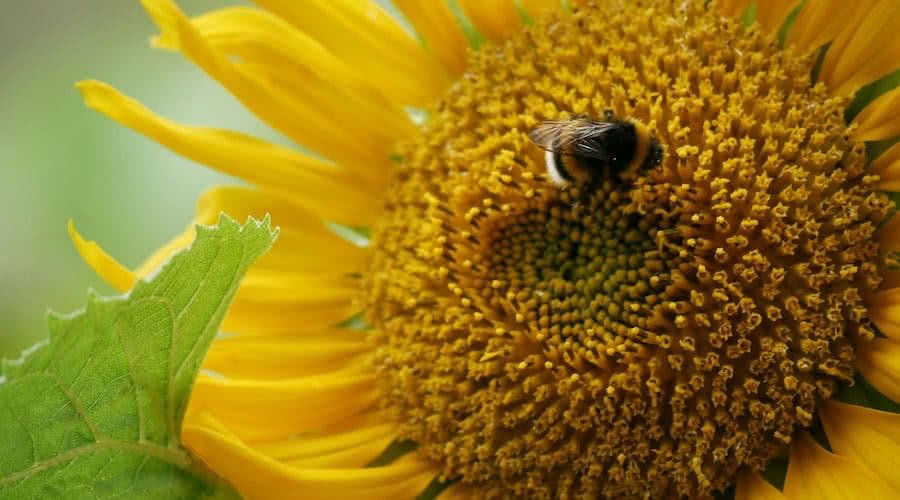
Decor Features for Cottagecore Gardens
While the plants are the stars of your garden, decor features help bring the whole space together, adding structure, whimsy, and charm.
Natural Materials
Using natural materials is best for maintaining the rustic feel of a cottagecore garden. Think stone paths, wooden fences, and vintage trellises. Reclaimed wood and weathered stones create a blend between garden and landscape, enhancing the natural feel of flow.
Upcycled Charm
Part of the cottagecore aesthetic is about sustainability. Upcycled decor like vintage teapots used as planters or old ladders turned into trellises adds personality and charm to the garden, as well as a sense of history and nostalgia.
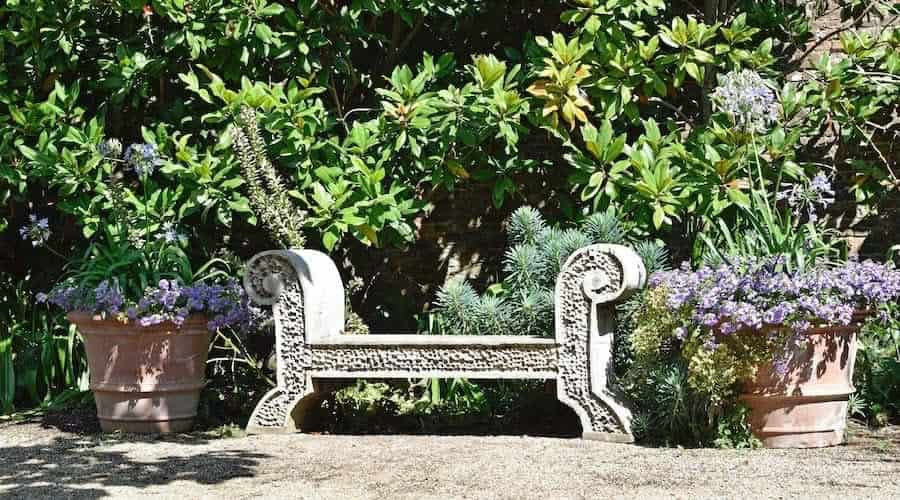
Seating and Nooks
Every cottagecore garden needs a cozy spot for quiet reflection, a place to sit and read or to have tea with a friend. Think of adding seating areas nestled among the plants – a wooden bench under a trellis, a vintage chair tucked away behind tall hollyhocks, or surrounded by fragrant roses. These small spaces make any garden a true haven.
Low Maintenance Gardening
Cottagecore gardens embrace imperfection, wildness, and nature’s natural flow. This makes it a great fit for those looking for a low-maintenance garden.

- Varied Plat Selection – choose a mix of evergreens, hardy perennials and self-seeding annuals for minimal effort but an abundant garden.
- Mulching: Add a thick layer of mulch to not only help retain moisture in the soil (meaning less frequent watering), but to also help suppress weeds, keeping your garden beds neat and tidy with minimal work.
- Resistant Plants: These make an excellent choice for a low-maintenance garden allowing for more or less rainfall or heat.
- Natural Pest Control: Rather than using harsh chemicals, encourage natural predators like ladybugs and birds to manage pests. Planting herbs like rosemary and thyme can also deter insects. Companion planting with for example marigolds or nasturtiums can help protect other plants from pests as well. Introducing chickens if the space allows can help with slugs and snails, and offer amazing fresh eggs for the kitchen.
FAQs
What is a cottagecore garden?
A cottagecore garden is inspired by the romanticized idea of the rural countryside. It typically features informal plantings of flowers, herbs, vegetables, and climbing vines in a way that feels natural, whimsical, and abundant. The focus is on creating a space that is both beautiful and practical, with a mix of wildflowers, edibles, and pollinator-friendly plants.
What are the most cottagecore flowers?
The most iconic cottagecore flowers include roses, lavender, hollyhocks, and foxgloves, which evoke a sense of old-world charm and countryside beauty. Wildflowers like cornflowers, along with delicate blooms such as sweet peas and poppies, help contribute to the cottagecore aesthetic.
What is the difference between farmhouse and cottagecore?
While both farmhouse and cottagecore aesthetics draw inspiration from rural living, farmhouse tends to focus more on practicality, clean lines, and modern-rustic decor. Cottagecore, on the other hand, is more about whimsy, floral abundance, and a romanticized, almost fairy-tale view of countryside life. The garden spaces in farmhouse style tend to be more orderly, while cottagecore gardens embrace wildness, soft edges, and layers of textures.
Final Thoughts on Cottagecore Garden Aesthetics
Creating a cottagecore garden aesthetic is about cultivating a space that connects you with nature and offers a place of peace, tranquility and abundance. Let the plants flow and grow organically, mix and match colors and textures, and embrace the beauty of imperfection. The cottagecore garden aesthetic embraces a natural, unstructured look with wildflowers, climbing vines, and cozy seating areas. Key features include stone pathways, birdbaths, and vintage garden tools to create a charming, countryside-inspired outdoor space. Whether your space is large or small, urban or rural, the principles of cottagecore gardening can be adapted to suit any area. Include a blend of practical plants like herbs and edibles with romantic flowers and whimsical decor elements, and you’ll create a cottagecore garden that is as functional as it is beautiful.

